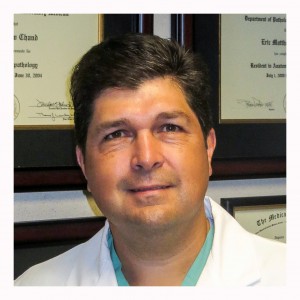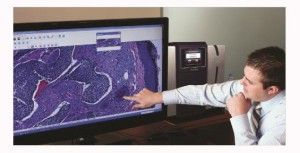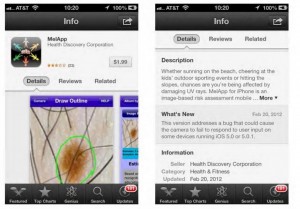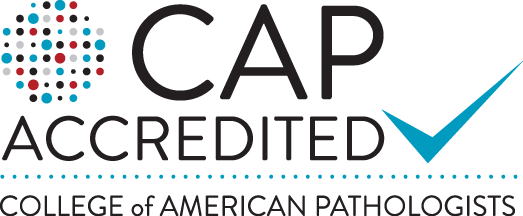Memorial Day 2021
Published May 23, 2014
In observance of Memorial Day, SEPA Labs will be closed on Monday 31, 2021. For access to the “on call” pathologist, please call 912-279-1900 or 888-261-2671.
HAPPY Pathologists’ Assistant Day

We at Southeastern Pathology Associates would like to take this opportunity to acknowledge our Pathology Assistants for their dedication and hard work.
A pathologists’ assistant (PA) is a highly trained allied health professional who provides various services under the direction and supervision of a pathologist. Southeastern Pathology Associates PAs are academically and practically trained to provide accurate and timely processing of laboratory specimens.
For more information on Pathologists’ Assistant Day please click here
Congratulations Michael Mazzotta – Winner of 2016 ASCP Regional Member Award
 SEPA Labs would like to congratulate Michael Mazzatta on winning the 2016 ASCP Regional Member Award for the South East Region.
SEPA Labs would like to congratulate Michael Mazzatta on winning the 2016 ASCP Regional Member Award for the South East Region.
Michael Mazzotta, our pathologists’ assistant (PA), based at our Brunswick location attended the ASCP conference in Las Vegas where he was recognized as one of the leading PA’s in the United States.
This past October, he attended the 2016 Lab Quality Confab held in New Orleans on a full scholarship (sponsored by BioMérieux) where he earned Master Certifications in Change Management and Data Analysis with Lean and Six Sigma. He also achieved his Six Sigma Yellow Belt certification.
Michael has been with SEPA Labs since 2005, he is a certified PA, has earned his MBA and MHA. He is currently a second year doctoral student in health care administration at the Medical University of South Carolina. The accepted title of his thesis is “Automation and Lean Process in and Anatomical Pathology Laboratory”.
SEPA Labs Welcomes New Pathologists
SEPA Labs would like to welcome the four newest additions to our pathology team….




Dr. Bradley Cheek Dr. Esther N. Bit-Ivan Dr. Wesley Jones Dr. Muhammad Zulfiqar
Each of these pathologists comes to SEPA with tremendous experience in various fields of pathology.
Dr. Cheek, Dr. Bit-Ivan, Dr. Jones and Dr. Zulfiqar have joined our Baptist Hospital Team in Jacksonville, FL. We are pleased to have the opportunity to bring their skills to our practice.
CMS Issues Major New ICD-10 Guidance for Physicians
Posted: July 30, 2015
The Centers for Medicare and Medicaid Services and American Medical Association have jointly developed comprehensive guidance for physicians on new ICD-10 compliance flexibilities that both organizations agreed to in early July.
Under pressure from the AMA and other provider organizations, CMS agreed to:
- Not deny claims solely based on the specificity of diagnosis codes as long as they are in the appropriate family of codes, so physicians won’t be penalized because of a coding error;
- Not audit Medicare claims in the first year of ICD-10 based on specificity of diagnosis codes if in the appropriate family of codes;
- Authorize advance payments if Medicare contractors cannot process physician claims coded with ICD-10;
- Not penalize physicians via reduced reimbursements for errors in selecting and calculating quality codes for the EHR meaningful use, PQRS and Value-based Modifier reporting programs as long as they use codes within the appropriate family of codes. Penalties also will not be applied if CMS has difficulty calculating quality scores during the ICD-10 transition; and
- CMS will establish an ICD-10 Ombudsman office to help physicians resolve problems during the transition.
Pathologist’s Corner – Dr. Eric Chand on Pancreatic Cancer
 To understand pancreatic cancer, it helps to know about the normal pancreas and what it does. The pancreas lies between the stomach and the spine and is about 6 inches long. The wider end of the pancreas is called the head, the middle section is called the body, and the narrow end is called the tail. The head of the pancreas is on the right side of the abdomen (belly), behind where the stomach meets the duodenum (the first part of the small intestine). The body of the pancreas is behind the stomach, and the tail of the pancreas is on the left side of the abdomen next to the spleen.
To understand pancreatic cancer, it helps to know about the normal pancreas and what it does. The pancreas lies between the stomach and the spine and is about 6 inches long. The wider end of the pancreas is called the head, the middle section is called the body, and the narrow end is called the tail. The head of the pancreas is on the right side of the abdomen (belly), behind where the stomach meets the duodenum (the first part of the small intestine). The body of the pancreas is behind the stomach, and the tail of the pancreas is on the left side of the abdomen next to the spleen.
The pancreas is a gland and has two main functions: 1) to make juices that help digest (break down) food (exocrine pancreas cells) and 2) to make hormones, such as insulin and glucagon, that help control blood sugar levels. Both of these hormones help the body use and store the energy it gets from food. The hormones are made by endocrine pancreatic cells. Read more…
Telepathology Services Come To SEPA Labs
SEPA is proud to announce that we have signed a contract to bring iScan Coreo into service at our central laboratory in Brunswick GA. This highlights our commitment to bring 21st Century telepathology technology to the communities we serve.
FROM THE MANUFACTURER
The iScan Coreo slide scanner offers unprecedented flexibility and performance for the anatomic pathology laboratory
 The VENTANA iScan Coreo scanner serves as the springboard for a total digital pathology environment in your anatomic pathology lab. The iScan Coreo scanner provides high speed slide scanning, improved image quality, and advanced slide handling. The scanner is packaged with advanced image viewing software offering pathologists and histotechnologists the ability to view and annotate digital images of scanned slides. The scanner can be fully integrated with the VENTANA Virtuoso image management software to provide users with a comprehensive digital pathology solution to support image acquisition, image management, image analysis, and customized reporting.
The VENTANA iScan Coreo scanner serves as the springboard for a total digital pathology environment in your anatomic pathology lab. The iScan Coreo scanner provides high speed slide scanning, improved image quality, and advanced slide handling. The scanner is packaged with advanced image viewing software offering pathologists and histotechnologists the ability to view and annotate digital images of scanned slides. The scanner can be fully integrated with the VENTANA Virtuoso image management software to provide users with a comprehensive digital pathology solution to support image acquisition, image management, image analysis, and customized reporting.
iScan Coreo key features
- Compact slide scanner with 160 slide capacity
- One-touch walk away scanning
- Auto-turret supports scanning with 4 objectives
- Live Mode for remote microscopy
- Vacuum slide handling
Pathologist’s Corner – Dr. Summerall on A Patient’s Guide to Colon Cancer and Lynch Syndrome /HPNCC
Posted: March 24, 2015
 Introduction
Introduction
March is National Colorectal Cancer Awareness Month. Each year, over 140,000 people are diagnosed with colorectal cancer, according to the National Cancer Institute. It is the second most commonly diagnosed type of cancer when men and women are combined. Because of increased surveillance and more effective treatment, deaths from colon cancer are steadily declining. Discoveries in genetics have lead to a greater understanding of the genetic basis of colon cancer, and the discovery of inherited cancer syndromes. Now, in some cases, people may be discovered through genetic testing to have an increased risk of developing colon cancers. These individuals can be closely monitored for early signs of cancer. If discovered, they can be treated early, before the cancer grows large or spreads.
Causes of Colon Cancer
The vast majority of colon cancers are sporadic, meaning their exact cause is unknown. Risk factors that increase the possibility of developing colon cancer include obesity, smoking, heavy drinking, a sedentary lifestyle, and a history of polyps on earlier colon screening examinations.
Approximately 5-10% of colon cancers, however, are caused by known inherited genetic mutations. These inherited genetic syndromes cause a very high incidence of colon cancers in affected individuals, and can predispose them to other types of cancer.
Hereditary Colon Cancer
Some genetic mutations—the polyposis syndromes– cause the formation of numerous pre-cancerous polyps. Some of these polyps progress to cancer. Other genetic mutations do not predispose individuals to the development of polyps, but lead to colon cancer. One of these genetic mutations leads to a cancer syndrome called Lynch Syndrome, also known as Hereditary Non Polyposis Colon Cancer Syndrome (HPNCC). (more)
Baptist Health Selects SEPA Labs for Pathology Services
Posted: March 9, 2015
Baptist Health has selected SEPA Labs (Southeastern Pathology Associates) as the exclusive provider of pathology professional services for all of its inpatient, outpatient and outreach activity. This exclusive contract will include the provision of adult and pediatric pathology services to all five Baptist hospitals, 24/7 on-call pathology services, as well as medical directorship to Baptist Labs in all locations.
The current contract with Jacksonville Pathology Consultants comes to an end May 21, 2015 and on that date, the SEPA team will take over management of all pathology services. SEPA has a solid track record of providing full-service anatomic and clinical pathology services to hospitals in Florida, Georgia and South Carolina, and is staffed by 30 board-certified pathologists. (more…)
Hospital Rating Systems Differ on Best and Worst
Posted: March 5, 2015
Four popular national rating systems used by consumers to judge hospitals frequently come to very different conclusions about which hospitals are the best — or worst — potentially adding to the confusion over health care quality, rather than alleviating it, a new study shows.
The analysis, published on Monday in the academic journal Health Affairs, looked at hospital ratings from two publications, U.S. News & World Report and Consumer Reports; Healthgrades, a Denver company; and the Leapfrog Group, an employer-financed nonprofit organization.
No hospital was considered to be a high performer by all four, according to the study of the ratings from mid-2012 to mid-2013, and the vast majority of hospitals earned that distinction from only one of the four.
Some hospitals were even designated as a high performer by one group and a low performer by another. (more…)
FTC Fines Marketers of Two Apps That Claim to Detect Melanoma
Posted: February 26, 2015
 The Federal Trade Commission on Monday announced two enforcement actions against the makers of two smartphone apps — “Mole Detective” and “MelApp” — that claim to be able to detect the symptoms of melanoma simply by snapping a picture of a mole with a smartphone.
The Federal Trade Commission on Monday announced two enforcement actions against the makers of two smartphone apps — “Mole Detective” and “MelApp” — that claim to be able to detect the symptoms of melanoma simply by snapping a picture of a mole with a smartphone.
The apps were downloaded by thousands of people and claimed to be able to calculate melanoma risk as high, medium or low by analyzing the pictures. The apps were on the market from 2011 to 2012, and cost as much as $4.99 to purchase. Both apps did suggest that users should see a physician if they had real concerns. But Mary Engle, the FTC’s associate director for advertising practices, said that the app advertisements gave an overall impression that they could be used as diagnosis tools.
“You need a trained dermatologist to make that assessment,” Engle said.
Pathologists Corner – Dr. Kosko Molecular Testing in Non-Small Cell Lung Cancer
Posted: February 02. 2015
 Lung cancer is the number one cause of cancer related deaths for both men and women in the United States. It is the second most commonly diagnosed cancer in both sexes in the United States. The incidence of lung cancer is declining in both men and women however; the incidence in women is declining at a slower rate than in males.
Lung cancer is the number one cause of cancer related deaths for both men and women in the United States. It is the second most commonly diagnosed cancer in both sexes in the United States. The incidence of lung cancer is declining in both men and women however; the incidence in women is declining at a slower rate than in males.
The majority of patients diagnosed with lung cancer present with advanced disease and treatment is increasingly being based on results of small biopsies or cytology specimens rather than larger resection specimens. Drugs which act as EGFR tyrosine kinase inhibitors and ALK inhibitors have shown significant clinical responses in a subset of patients whose tumors have activating mutations in either EGFR or ALK genes making identification of patients who would benefit from treatment with these medications a priority. Current clinical approaches to treating lung cancer now rely on both identification of the histologic type of tumor and the molecular findings to select the optimal treatment for the individual patient. It is no longer sufficient to stop at a diagnosis of Non-Small Cell Lung Cancer (NSCLC), NOS if adequate tumor tissue is present to take the diagnosis further with the understanding that there will always be some cases in which a diagnosis of NSCLC, NOS is necessary owing to specimen/sample size or quality. In these instances, re-biopsy may be needed to perform molecular testing if a larger resection will not be available. Read more
Georgia’s Largest Hospital Association Crafts Proposal For Medicaid Expansion
Posted: January 15, 2015
The Georgia Hospital Association has not been seen as actively pushing for Medicaid expansion, but in recent days the state’s largest hospital association has crafted a proposal that includes a call to expand Medicaid, Georgia Health News is reporting.
The GHA proposal, obtained by the medical news website, asks the state to take advantage of the federal government’s commitment to absorb 100 percent of the costs of expanding the program until 2017. The group says the plan would be both beneficial and fiscally wise, GHN reports. (more…)
Pathologist’s Corner – Dr. Hon on Breast Cancer Tissue Handling and Updates for Her-2 Testing
Based on the 2013 ASCP/CAP Guidelines for HER2 Testing in Breast Cancer
The introduction of breast bio-markers, in particular, estrogen and progesterone receptors and Her-2/neu, into clinical practice and their critically important role in adjuvant treatment decisions has created challenges for the surgical pathology laboratory. Initially, frozen tissue containing tumor was sent for estrogen receptor analysis in the 1980s. With the advent of receptor testing on formalin fixed, paraffin embedded tumor tissue in the early 1990s, the standards for collection and preservation of clinical samples focused on tissue preservation for morphologic examination, with little if any attention paid to preserving the quality of macromolecules that may be in the tissue. Because of the importance of these markers for determining the most appropriate treatments available for each patient, there was a need for standardizing pre-analytic variables, with the goal of developing standardized methods of tissue procurement and processing, and documenting how these variables affect the quality of tissue for biomarker testing and molecular analysis. By better defining specimen handling requirements and approaching diagnostic tissue samples as analytes, we can improve the quality of routine diagnostic samples, which in turn will enhance adjuvant treatment decisions when dealing with breast cancer and other solid tumor malignancies. In view of this, ASCO and CAP developed guidelines for breast cancer tissue handling and evaluation of receptors and Her-2 in 2007. These guidelines were updated in 2013. Her-2 in particular can be heterogeneous in tumor tissue which requires additional considerations in sampling and evaluation. The updated ASCO/CAP guidelines and issues regarding Her-2 sampling are summarized in the following pictorials. Read More…
5 Things To Know: Obama Health Law Again In Play
Posted: January 05, 2015
WASHINGTON (AP) — New episodes in the nation’s long-running political drama over health care are coming via your news feed in 2015.
The fate of President Barack Obama’s health care law again hangs in the balance as the Supreme Court weighs another legal challenge to the program, now covering millions of people. And a Republican-led Congress prepares for more votes to repeal the Affordable Care Act, ignoring threatened vetoes by the president.
Five things to know about health care in the year ahead:
THE MAIN EVENT
The biggest health care news of 2015 probably won’t come from Congress or the White House, but the Supreme Court. The court has agreed to hear another lawsuit that goes to the heart of Obama’s strategy for providing health insurance to people who can’t get coverage through their jobs. The case will be argued early in March, with a decision expected late in June.
The plaintiffs contend that the law as written only allows the government to subsidize coverage in states that have set up their own their own health insurance markets, or exchanges. With Washington currently running the markets in 37 states, much of the law’s coverage expansion could unravel if the Supreme Court agrees.
It would be a moment of truth for the law’s opponents and its supporters alike. (more…)




